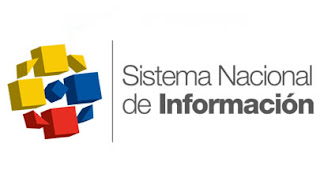
Fortunately, Ecuador, has a government institution responsible for collecting statistical and geographical information, generated by the public service institutions. This institution is Sistema Nacional de Información, (available under: http://www.sni.gob.ec).
The Planning and Public Finance Code, in the article 33 of Registro Oficial No.306, 2010, states that the National Information System (SNI) is the organized group of elements, enabling the interaction of actors in order to access, collect, store and transform data into relevant information for development planning and public finances".
These elements include the geographic information of institutions such as the Military Geographical Institute, Ecuadorian Space Institute (formerly CLIRSEN), National Institute of Statistics and Census, Ministry of Agriculture, Ministry of Environment, Ministry of Health, Ministry of Education, Ministry of Tourism, Ministry of Transport and Public Works, Geophysical Institute of Escuela Politécnica Nacional, National Institute of Meteorology and Hydrology, National Institute of Cultural Heritage, the Navy Oceanographic Institute, National Electricity Council, National Water Resources Council, National Secretary of Planning and Development and National Water Secretary.
Basic and thematic information is downloadable for free, in many formats, at different scales such as: 1: 50,000, 1: 100,000, 1: 250,000, 1: 500,000 and 1: 1,000,000. Additionally, information in raster format is also available, by contacting SNI.
Before the creation of SNI , in 2011 , the geographic information in Ecuador was widely dispersed and, despite being available in most public institutions that generated it, most users were unaware of its existence and this impacted on the quality, organization and use of time in a particular job. On the other hand, an institution that brings together all the information makes it easier to access accurate official information, and also avoids the wasting of time and resources in generation of information that already exists, and can be used without restrictions.
I personally believe it has been very rewarding the interaction with SNI from the two approaches, initially as part of the system and now as user. In the first case, participating in the generation of information in a public institution, whose geographical information contributes to SNI. It allowed me to broaden the outlook of the national agricultural reality, from a geographic perspective, by lifting primary georeferenced information. Secondly, now as a teacher, I often use the data provided by the system and teach about their use and importance as a source of accurate geographic information of the country.
REFERENCES
Sistema Nacional de Información. 2011. Accessed on december 1st, 2013, under http://www.sni.gob.ec




